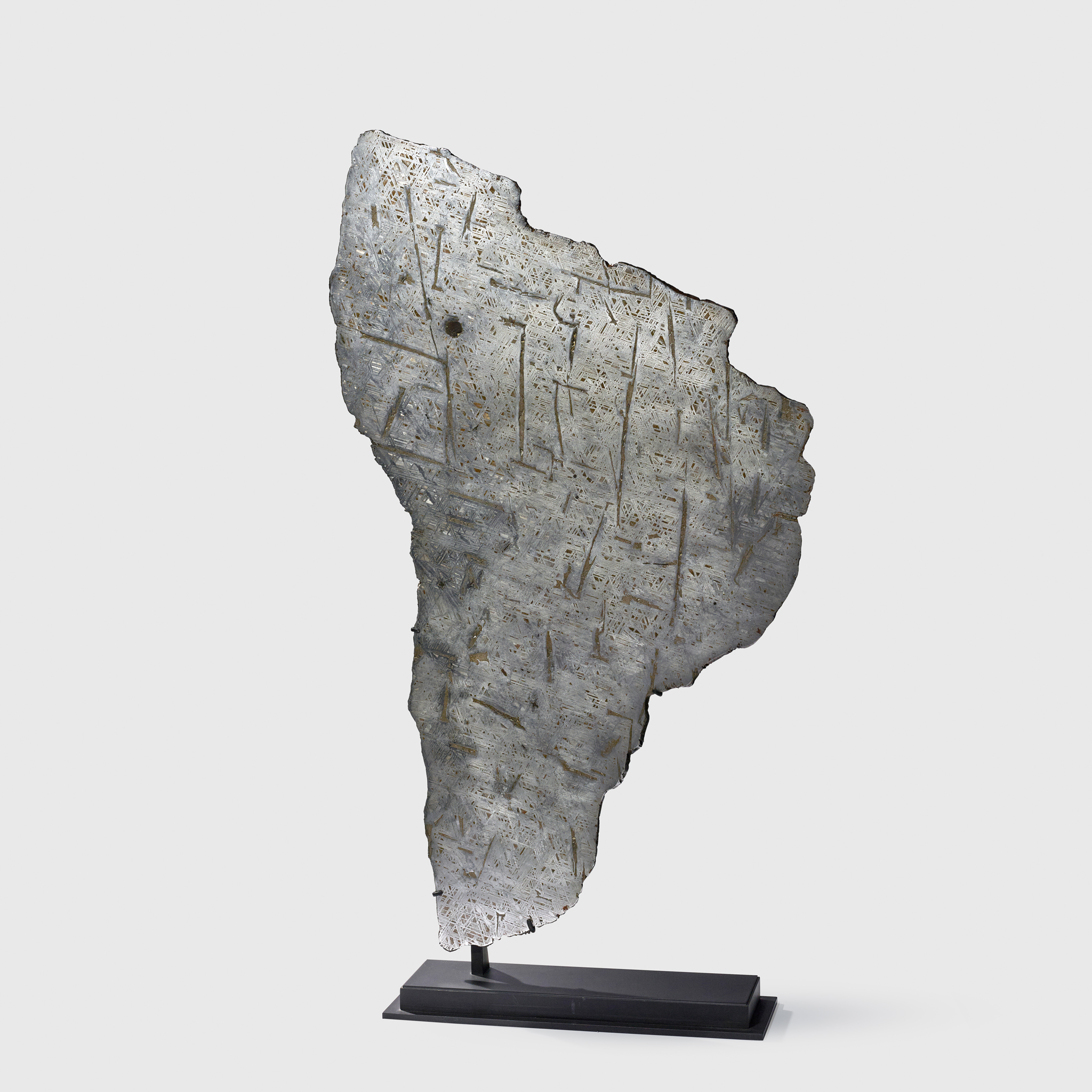HUGE IRON METEORITE CROSS SECTION SLICE
FELL ALETAI, XINJIANG PROVINCE, CHINA, FORMED 4.56 BILLION YEARS B.P.
Estimate: £15,000 - £25,000
Auction: 13 March 2025 from 13:00 GMT
Description
cut and polished meteorite, in roughly triangular form, giving the appearance of a shard, raised on a bespoke mount
Dimensions
72.4cm tall
Provenance
The Aletai meteorite, one of the largest known iron meteorites, was discovered in 1898 in the Aletai region of Xinjiang Province, China. It has a total mass of approximately 74 tonnes, with the largest fragment, known as the Armanty mass, weighing about 28 tonnes.
The meteorite's strewn field extends over 430 kilometres, making it the longest known strewn field on Earth. This extensive distribution is believed to be due to the meteorite's unique "stone skipping" trajectory through Earth's atmosphere. It is a mystery when it actually fell to earth, but given its significant size and extensive distribution, the Aletai meteorite's fall would have been a significant event.
Footnote
The meteorite from which this sculpture was formed, originated in the Asteroid Belt around the same time as the birth of our Solar System. It is approximately 4.56 billion years old. The distinctive interlacing bands, appearing like a metallic frost, are known as the Widmanstätten pattern. They take millions of years to form, emerging when the nickel-iron alloys within the meteorite cool extremely slowly in the vacuum of space, allowing the unique crystalline structures to grow.

